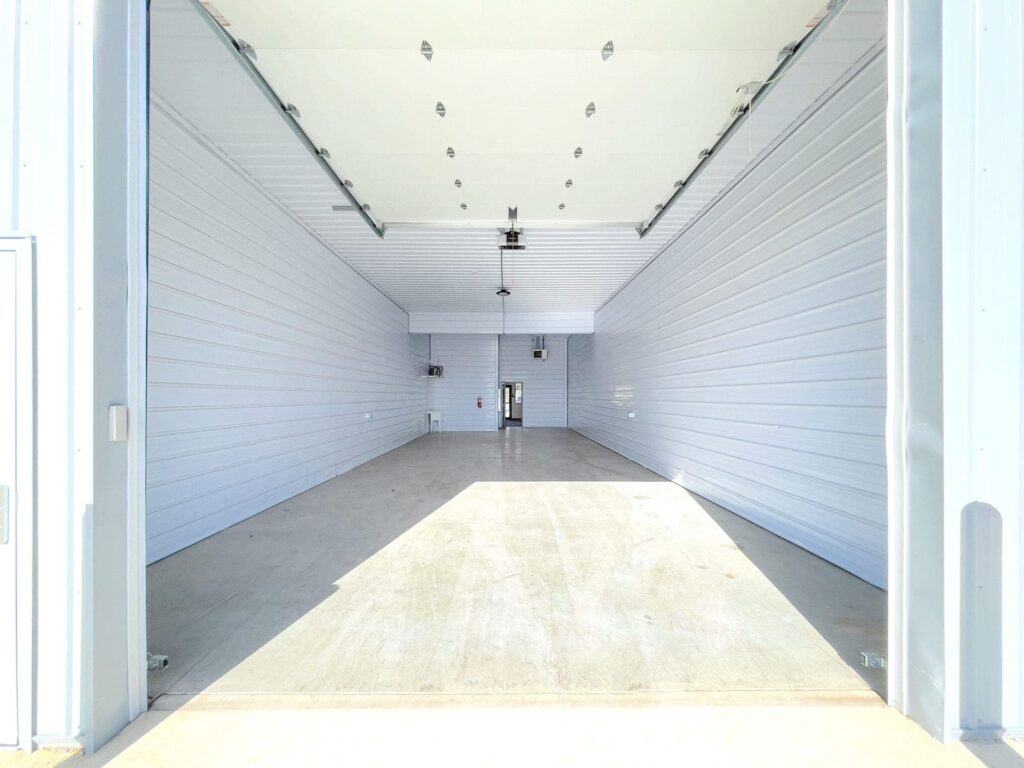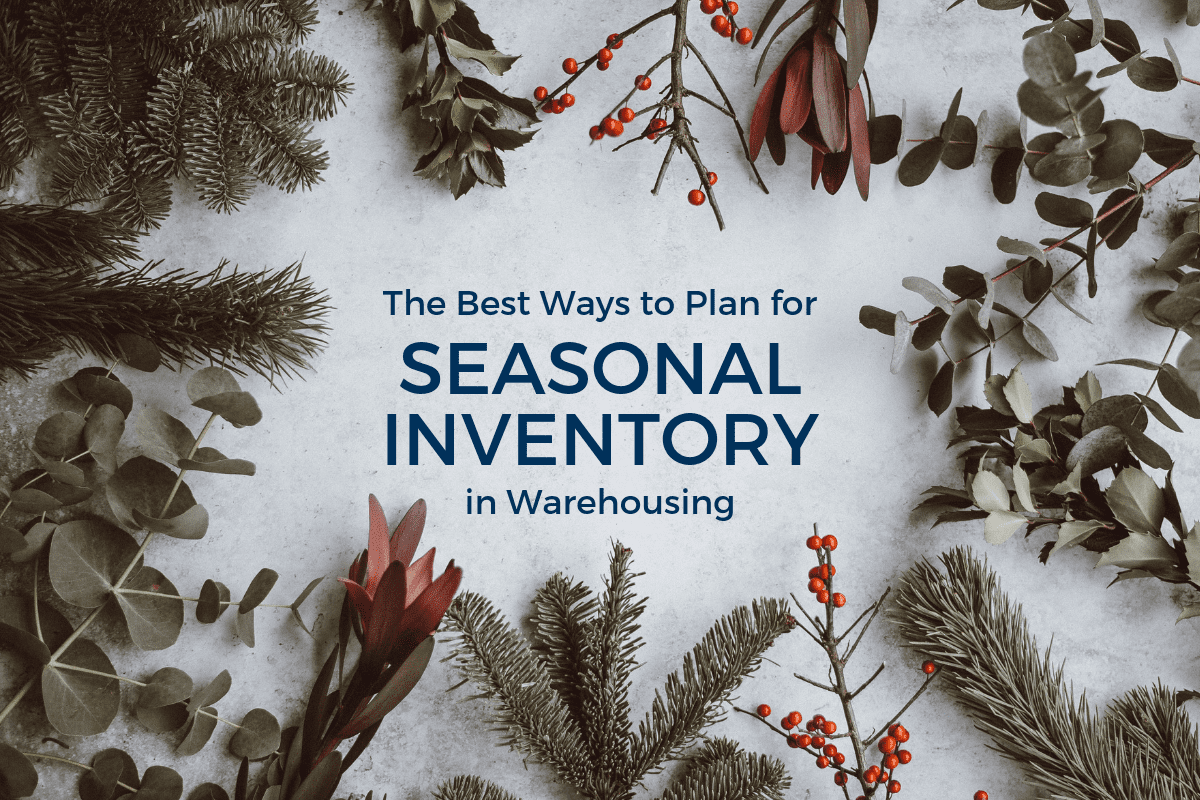- Understanding the Importance of Climate Controlled Warehouses
- Key Features to Look for in a Climate Controlled Warehouse Rental
- Maximizing Your Return on Investment with Climate Controlled Warehouse Rentals
- Future Trends in Climate Controlled Warehousing
- Protect Your Inventory With RISE Warehouse Rentals
- Frequently Asked Questions
Operating a business requires carefully managing inventory to meet customer demand. However, warehouses without climate control expose products to temperature and humidity fluctuations, potentially leading to damage and loss. Renting a humidity and temperature controlled warehouse space protects goods and your bottom line while providing security and savings.
Understanding the Importance of Climate Controlled Warehouses
A climate-controlled warehouse is a storage facility designed to maintain and regulate temperature and humidity levels, creating an optimal environment for preserving various types of inventory. This is especially important for sensitive items such as food, electronics, beauty products, and industrial parts. Storing goods in extreme heat or cold can lead to deterioration and significantly shorten shelf life, making climate control essential for protecting your valuable inventory.
The Definition and Basic Operation of a Climate Controlled Warehouse
Specifically, climate-controlled warehouses utilize HVAC systems and air handlers to regulate:
- Temperature: Maintained year-round at 68-78°F
- Humidity: Controlled between 40-50% relative humidity
These recommendations can vary depending on your industry. For example, refrigerated food products should be kept at or below 40°F.
Sensors should monitor conditions and trigger heating/cooling as needed to stay within set ranges. Strategically placed thermostats, humidistats, and air circulators distribute stabilized air. Backup power options prevent disruption during outages.
Why Invest in Climate Controlled Units
Maintaining optimal temperatures and humidity levels are good manufacturing practices. They provide enormous savings over time by:
- Reducing Damage: Consistent indoor climate conditions prevent weather-related spoilage, mold growth, label fading, and structural damage from freeze/thaw cycles or intense heat.
- Extending Shelf Life: Regulating storage environments at ideal temperature and humidity keeps goods marketable for longer periods compared to unconditioned warehouses. Many items last over twice as long under controlled settings.
- Maintaining Value: Minimizing climate fluctuations maintains original product quality, integrity, and appearance far longer. Protected inventory keeps top grading for higher sales value and return on investment.
There are also major savings on operating expenses from climate system energy efficiency optimizations. Smart climate controls reduce costs significantly compared to traditional warehouse cooling and heating expenses.
Top Industries Benefiting from Climate Controlled Warehouses
While environmental control systems bring some level of protection to most warehoused goods, certain sectors depend extensively on precision temperature and humidity regulation. Precise climate regulation prevents catastrophic losses from heat, freezing, condensation, corrosion, and contamination for these industries:
- Food and Beverage: Refrigeration preserves perishable ingredients, produce, and finished goods against mold and spoilage.
- Electronics: Humidity regulation prevents corrosion while controlled temperatures protect sensitive tech components.
- Biologics and Pharma: Strict mandated climate range standards maintain drug safety and potency. Hospitals, pharmacies, and consumers require properly stored medications.
Key Features to Look for in a Climate Controlled Warehouse Rental
When researching warehouse rental providers, prioritize these top considerations:
Optimal Temperature and Humidity Control
Lease a storage facility that can demonstrate:
- Strict standards for temperature and relative humidity that can be adjusted according to your industry.
- Regular maintenance of HVAC systems and monitoring equipment.
- Data records validating consistent climate adherence.
Security and Surveillance Systems
Confirming that robust measures are in place to prevent theft and deter external threats to your inventory provides peace of mind. Protect your assets with warehouse rentals featuring 24/7 recorded CCTV surveillance both inside and around the premises. Restricted access gates manned by guards enhance entry control, while tough perimeter fencing and barricades provide an added layer against intrusions. Installed motion sensors triggering bright LED security lighting eliminate dark corners around the grounds at night. Taken together, these integrated systems deter, detect, and defend against inventory loss.
Adequate Storage and Easy Accessibility
When weighing climate-controlled warehouse rentals, storage dimensions and interior configurations should match current and projected future inventory volumes to support business growth. Facilities offering flexible build-outs with high stacking capability enable you scale up operations without needing to move. Seeking ample spaces with electric overhead door operators and car remotes allows for easy entry and the smooth transfer of goods. High ceilings and access to forklifts accommodate stacked racks to save space and increase capacity.
Inside, clearly marked, dedicated storage zones eliminate guessing where specific items should go. Logical layouts with spacious aisles, smooth floors, and ergonomic lift-assist options bolster safety and efficiency for personnel filling orders quickly. Accessibility, comfort, and well-organized interiors optimize productivity.
Maximizing Your Return on Investment with Climate Controlled Warehouse Rentals
Selecting the optimal climate-controlled rental location and facility layout boosts operational efficiency, fueling increased profitability over time. As a business owner, ensuring easy inventory access and sustainable operating practices makes smart financial sense.
Strategic Location Selection and Efficient Inventory Management
Opting for a rental facility closely situated near your core suppliers, transportation hubs, and target customer markets minimizes shipping miles. This reduces fuel costs and delivery time. Forklifts enable seamless receiving and sorting of incoming inventory, and clearly tagged storage zones help warehouse staff rapidly fill orders for dispatch. By minimizing handling steps, you process higher volumes faster using less labor, and products arrive fresh for your customers. Greater efficiency means happier customers, higher sales, and expanded profit margins.
Discover tips on selecting the right warehouse rental location.
Foster Sustainable Practices with Energy Efficient Designs
Seeking out rental spaces incorporating thoughtful energy-saving features also pays ongoing dividends. Climate-controlled warehouses with smart LED lighting arrays and occupancy sensor switches curb electricity usage compared to traditional fluorescent fixtures, cutting energy bills substantially. With sustainability being smart business, your brand may also benefit from marketing these initiatives to increasingly eco-conscious consumers.
Increasing Profitability through Client Satisfaction
Protecting your inventory from degradation with optimized climate control directly translates into higher profitability and faster business growth. By preserving product quality and freshness, you reduce discarded waste from damaged goods. Delivering orders to buyers with contents intact in pristine, new condition earns repeat sales and referrals.
Plus, positive word-of-mouth from happy customers will boost your status as a reliable business that ships quality goods quickly. This reputation for integrity expands your customer base. As more clients source from you, sales, revenue, and profitability all rise in tandem over time.
Tips for Choosing the Right Climate Controlled Warehouse Rental Provider
When comparing rental companies, look for the following:
- All-inclusive pricing covering utilities, maintenance fees, and equipment use.
- Month-to-month lease options provide convenience and financial flexibility.
- Amenities like free on-site WiFi, conference rooms, public restrooms, and training workshops.
Read our guide on warehouse rentals to learn how to pick the perfect space.
Future Trends in Climate Controlled Warehousing
As climate-controlled warehousing continues advancing, two key trends are emerging – smarter digital transformation and a shift toward sustainability.
Advanced Digital Innovations in Climate Controlled Warehouses
Climate-controlled warehouse managers are implementing more advanced technologies to achieve precision temperature and humidity regulation, including:
- Smart Climate Controllers: These AI-powered thermostats collect sensor temperature/humidity data and make subtle heating/cooling adjustments to maintain interior conditions within tight set ranges. Advanced algorithms conserve energy while achieving remarkable climate stability.
- Automated Alert Systems: Networked sensor arrays continuously monitor warehouse microclimates, HVAC performance, and door openings. Cloud-based programs trigger instant email or text notifications if temperatures shift out of spec so managers can promptly intervene.
- Real-Time Climate Dashboards: User-friendly cloud platforms let rental managers remotely check control panel readings via desktop or smartphones for temperature maps, humidity levels, system diagnostics, and energy usage data. Adjustments are made easily online through the dashboard for optimal functionality.
Together, these innovations optimize climate regulation precision, tighten inventory control, spot inefficiencies, reduce labor overhead, and enhance overall warehouse functionality.
The Emergence of Green and Sustainable Warehousing
Increasingly, public sentiment and government incentives are driving warehouses toward renewable energy sources and eco-friendly processes, including:
- Sustainable Construction Materials: New climate-controlled warehouses are being built incorporating recycled building materials, forest-certified lumber, plant-based insulation, and low-emission paints/sealants. These elements reduce environmental impact.
- Energy-Efficient Equipment Systems: Upgrading to ENERGY STAR-rated programmable HVAC systems, heat pump water heaters, LED lighting arrays, and smart power management solutions conserve electricity and cut utility costs.
- Carbon-Neutral Shipping Practices: Leveraging zero-emissions transport for inventory deliveries and pickups eliminates pollutive diesel exhaust from supply chain logistics. Electric semis, hydrogen-fueled trucks, and biofuel vehicles enable carbon-neutral freight movement.
Protect Your Inventory With RISE Warehouse Rentals
RISE Commercial District provides short-term, climate-controlled, and budget-friendly warehouse rentals featuring:
- Precision Temperature/Humidity Regulation: We maintain optimal temperatures and humidity levels using state-of-the-art HVAC systems. Real-time sensor data ensures our climate meets mandated storage condition standards.
- Ironclad Security: Our gated properties are monitored 24/7 via CCTV cameras. Restricted overnight access via coded entry keys enhances after-hours security.
- Complete Business Infrastructure: We offer customizable warehouse sizing, from small storage units to expansive high-ceiling bays fitted with ample LED lighting and clearly delineated storage zones. We provide free access to forklifts so you can efficiently receive and process client inventory.
- Flexible Rental Terms: Lease our climate-controlled warehouses for terms as short as one month or as long as 1-2 years. Our bundled all-inclusive rates cover all utilities, maintenance, security, and on-site equipment usage so you avoid unpredictable fees.
Protect your products and your profits.
FAQs
What is a climate controlled warehouse?
A climate controlled warehouse system is a storage facility that actively regulates temperature, humidity, and other environmental conditions within the building. Climate control systems maintain optimal levels for the type of inventory stored, protecting goods from damage due to extreme heat, cold, moisture, or dryness. The warehouse utilizes HVAC technology such as air conditioners, heaters, dehumidifiers, and ventilation to keep conditions steady year-round.
Why are climate-controlled warehouses important?
Consistent climate control protects inventory from damage due to temperature and humidity fluctuations. This saves products from spoiling and preserves quality over longer periods compared to unconditioned warehouses.
What industries use climate-controlled warehouses the most?
Pharmaceuticals, electronics, and food/beverages have the greatest climate-controlled warehouse needs due to mandated storage standards or highly perishable ingredients. However, climate regulation benefits nearly all sectors by reducing waste.
What features should I look for in a climate-controlled warehouse?
Seeking facilities with precise HVAC systems to maintain optimal 68-78°F temperatures and 40-50% humidity. Also, prioritize 24/7 security systems, ample storage capacity, forklift access, and flexible lease terms.



